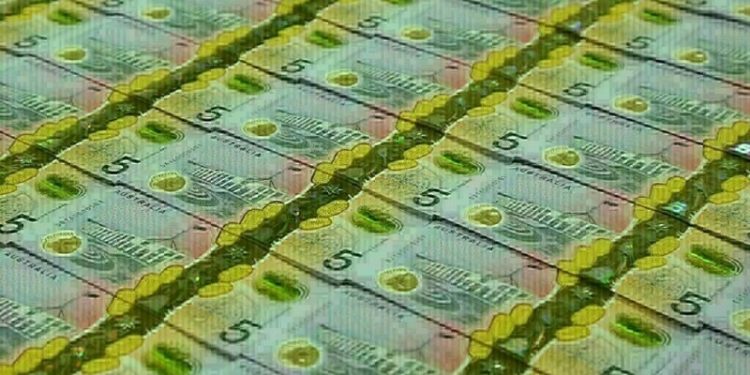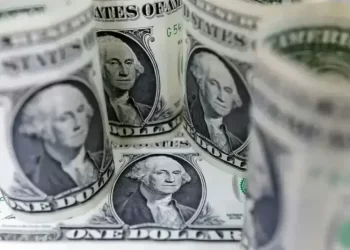SYDNEY: The Australian dollar extended gains on Friday following a solid jobs report while also getting a helping hand from China where stocks rose on the launch of support measures and slightly stronger-than-expected economic growth.
Markets have further pared the chance of a rate cut in Australia this year to just 25%, with a first easing not fully priced in until April 2025, after strong US retail sales poured some cold water on bets of aggressive US easing in the months to come.
The Aussie gained 0.2% to $0.6708, rising back above a key level of 67 cents.
It gained 0.4% overnight even in the face of a strong dollar as strong domestic jobs numbers meant little chance of a year-end rate cut.
For the week, it is down 0.7%, marking the third straight week of losses.
Chinese data showed gross domestic product (GDP) grew 4.6% in the third quarter, the slowest pace since early 2023, but retail sales, industrial output and investment data beat expectations in September.
The Chinese central bank announced the launch of a swap programme giving funds, insurers and brokers easier access to funding for stock buys. Regulators also announced the loan prime rate will be lowered 20-25 basis points next week.
The Aussie is often sold as a liquid proxy for the yuan, which also gained after those announcements.
China is Australia’s biggest trading partner for exports such as iron ore and coal.
Luci Ellis, chief economist at Westpac, however, said it is hard to see a lasting upside for iron ore exports from the stimulus measures.
Australian dollar gets much needed lift from strong jobs, bond yields rise
“In the short term, the consolidation of China’s steel industry favours the imported ore that Australia produces. But like the stimulus measures announced in recent weeks, these forces delay a near-inevitable slide in industries that have structural reasons to shrink.
They do not create major avenues for additional growth for Australia.“
The kiwi dollar rose 0.1% to $0.6064, but is down 0.7% for the week.
It is being pinned at a key technical level around $0.6050 after the soft inflation readings this week raised the prospects of even larger rate cuts by the Reserve Bank of New Zealand.
Analysts at ANZ say the risk of a break lower cannot be discounted with US bond yields rising and markets scaling back expectations for Fed cuts.
Bond yields tracked their US counterparts higher.
Three-year Australian government bond yields rose 5 basis points to 3.866%, the highest since July 31, while 10-year yields jumped 8 bps to 4.321%, the highest since July 25.
SYDNEY: The Australian dollar extended gains on Friday following a solid jobs report while also getting a helping hand from China where stocks rose on the launch of support measures and slightly stronger-than-expected economic growth.
Markets have further pared the chance of a rate cut in Australia this year to just 25%, with a first easing not fully priced in until April 2025, after strong US retail sales poured some cold water on bets of aggressive US easing in the months to come.
The Aussie gained 0.2% to $0.6708, rising back above a key level of 67 cents.
It gained 0.4% overnight even in the face of a strong dollar as strong domestic jobs numbers meant little chance of a year-end rate cut.
For the week, it is down 0.7%, marking the third straight week of losses.
Chinese data showed gross domestic product (GDP) grew 4.6% in the third quarter, the slowest pace since early 2023, but retail sales, industrial output and investment data beat expectations in September.
The Chinese central bank announced the launch of a swap programme giving funds, insurers and brokers easier access to funding for stock buys. Regulators also announced the loan prime rate will be lowered 20-25 basis points next week.
The Aussie is often sold as a liquid proxy for the yuan, which also gained after those announcements.
China is Australia’s biggest trading partner for exports such as iron ore and coal.
Luci Ellis, chief economist at Westpac, however, said it is hard to see a lasting upside for iron ore exports from the stimulus measures.
Australian dollar gets much needed lift from strong jobs, bond yields rise
“In the short term, the consolidation of China’s steel industry favours the imported ore that Australia produces. But like the stimulus measures announced in recent weeks, these forces delay a near-inevitable slide in industries that have structural reasons to shrink.
They do not create major avenues for additional growth for Australia.“
The kiwi dollar rose 0.1% to $0.6064, but is down 0.7% for the week.
It is being pinned at a key technical level around $0.6050 after the soft inflation readings this week raised the prospects of even larger rate cuts by the Reserve Bank of New Zealand.
Analysts at ANZ say the risk of a break lower cannot be discounted with US bond yields rising and markets scaling back expectations for Fed cuts.
Bond yields tracked their US counterparts higher.
Three-year Australian government bond yields rose 5 basis points to 3.866%, the highest since July 31, while 10-year yields jumped 8 bps to 4.321%, the highest since July 25.









